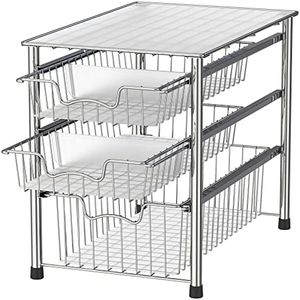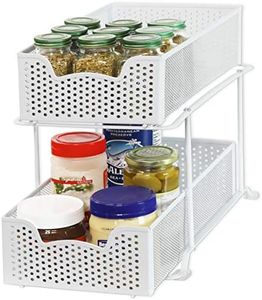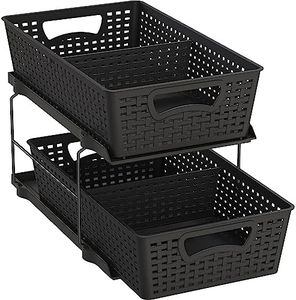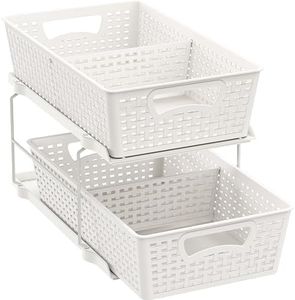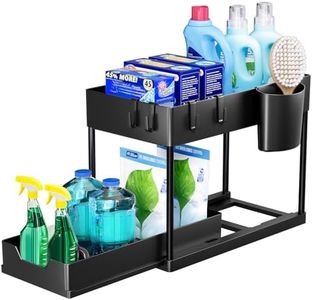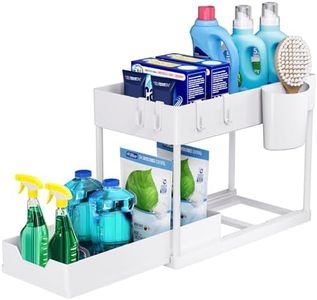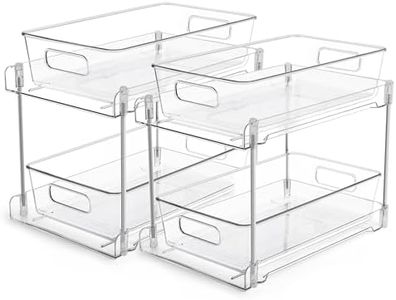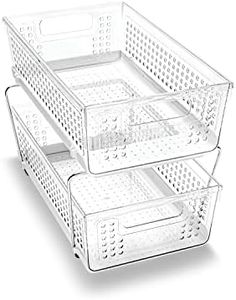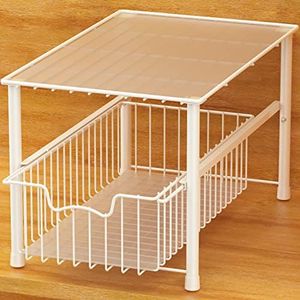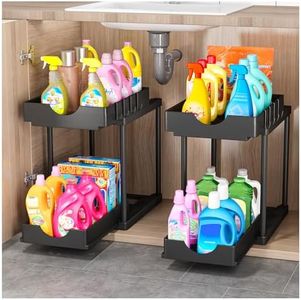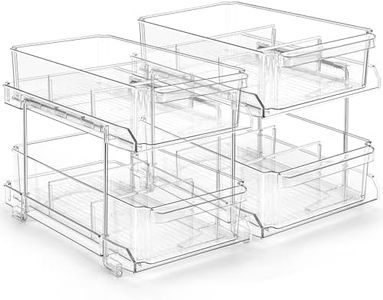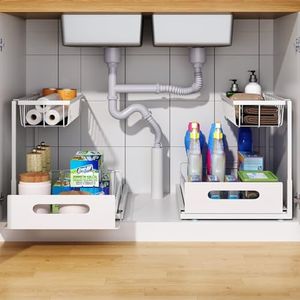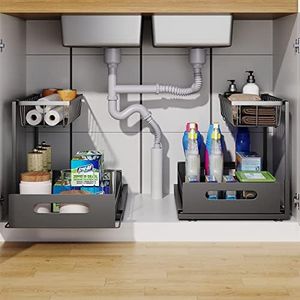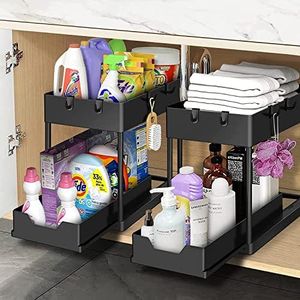We Use CookiesWe use cookies to enhance the security, performance,
functionality and for analytical and promotional activities. By continuing to browse this site you
are agreeing to our privacy policy
10 Best Under Sink Organizers
From leading brands and best sellers available on the web.Buying Guide for the Best Under Sink Organizers
Choosing the right under-sink organizer is all about maximizing the often-overlooked space beneath your sink. This space usually has pipes and odd shapes, so an ideal organizer helps turn a messy area into a tidy, accessible storage zone. When shopping for one, take careful measurements of both the width and height available, check what you intend to store, and think about how often you need to access those items. The goal is to select something that not only fits your space but also simplifies your daily routines.Size and DimensionsSize and dimensions refer to the actual measurements of the organizer. This is crucial because under-sink spaces can be small or oddly shaped, often due to plumbing. Before you buy, measure your available space, including height, width, and depth. Organizers come in various lengths and heights: compact for smaller spaces and larger, tiered ones for more open cabinets. If you have a lot of room, a double or multi-tier system might work; if space is tight or pipes interfere, a single-tier or adjustable solution is better. Pick based on the cabinet size and the obstructions inside—it’s all about a snug fit without jamming or crowding.
AdjustabilityAdjustability means whether the organizer can be made bigger or smaller, or configured to fit around pipes or obstacles. Adjustable organizers often have sliding or expandable parts, letting you customize them for your specific space. Fixed models offer less flexibility but may be sturdier. If your plumbing is complex or uneven, choosing an adjustable organizer is wise. For simpler spaces, fixed models might do the job and often cost less. Consider how much your space changes—if you want to move or reconfigure, adjustability is a plus.
Material and DurabilityMaterial and durability refer to what the organizer is made of—common materials include plastic, metal, or coated wire. Plastic is lightweight and won’t rust, but may hold less weight; metal is strong but can corrode if it gets wet. Coated wire offers a balance, combining strength and some rust resistance. Choose metal or coated organizers if you need to store heavier or wet items, like cleaning supplies. Plastic works well for lighter items or where spills aren’t a concern. Think about what you will store and whether the area might get damp.
Tiers and ShelvesTiers and shelves describe how many levels of storage the organizer has—a single shelf holds larger bottles or bins, while two or more tiers let you separate and layer items. Multiple tiers can boost vertical storage but may make tall bottles harder to fit. If you store mostly small items or want to double your space, pick an organizer with extra shelves. For big containers, go for fewer tiers with more open space. Base your choice on what you store and how you prefer to arrange it.
Ease of Installation and AccessThis is about how simple it is to put the organizer in place and get items in and out. Some organizers just slide in, while others require tools, screws, or adhesive. Pull-out features let you access items at the back more easily. If you need to reach things often, choose one with sliding shelves or drawers. If installation isn't your thing, go for a no-drill, freestanding model. Think about who will use it—easy access is key for busy kitchens or families.
